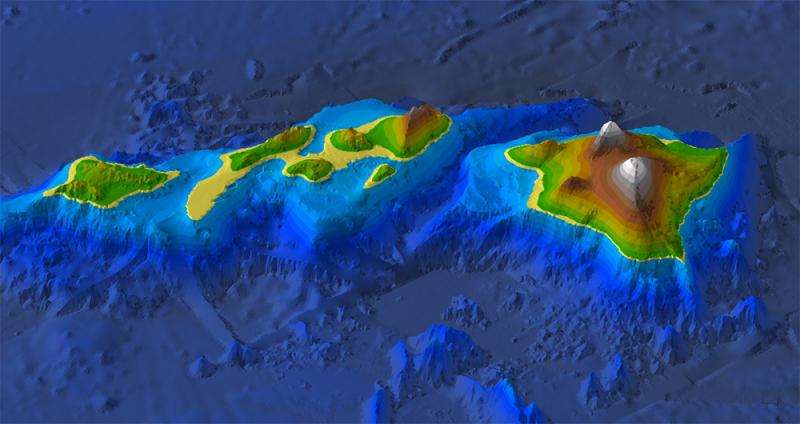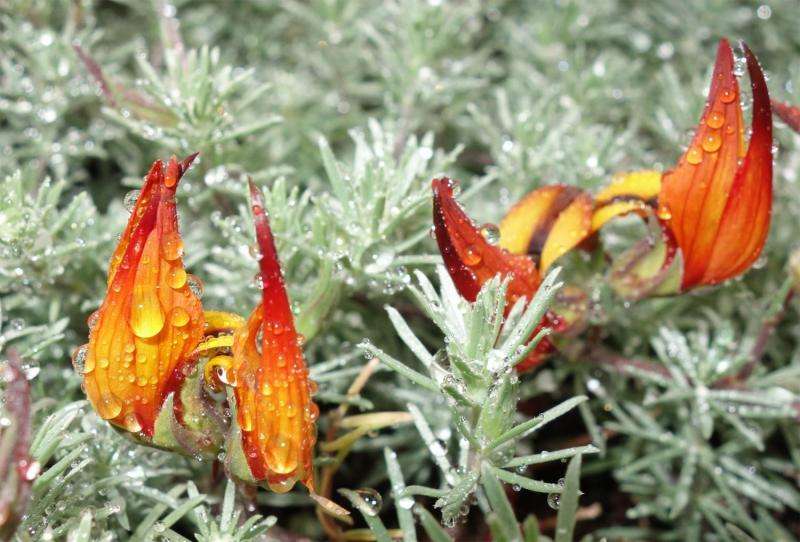March 31, 2016 report
Study charts changes in island biodiversity as oceans rose over past 20,000 years

(Phys.org)—A team of researchers affiliated with several institutions in Germany has conducted a study of island biodiversity over the past 20,000 years, a timeframe where sea levels have risen approximately 100 meters due to warmer temperatures and melting ice. In their paper published in the journal Nature, the team describes how they went about their study, their findings and their hopes that their efforts will help predict changes to come as the planet continues to heat up. José María Fernández-Palacios with Universidad de La Laguna in the Canary Islands, has provided a News & Views piece on the efforts by done by the team in the same journal issue and also gives an overview of current research regarding island biodiversity.
For many years, the main themes regarding island biodiversity fell into two categories, degree of isolation and island size—it was believed that both contributed significantly to the degree of diversity for any given island as well as to the numbers of endemic species. In this new effort, the researchers have found another factor that appears to be just as important—how big an island was before the seas began to rise. Changes in overall island size when sea levels rise depends, of course, on how much slope there is—thus volcanic-type islands lose land area very slowly, whereas islands that became islands only because some past event caused them to be cleaved from a continent, tend to "shrink" much faster.
To learn more about how sea level rise related to diversity, the researchers looked at 184 oceanic islands across the globe over the course of the past 21,000 years—which covered the time from the last glacial maximum, till the present day—focusing most specifically on data regarding land area, degree of isolation, elevation, the number of islands in any given chain, and of course temperature and precipitation levels. Their study also looked at the diversity of flowering plants including those that are believed to be endemic to an island or chain. In looking at patterns that emerged, the researchers found that the degree of endemic species is higher today for islands that had a lot more land mass back then. Interestingly, they also found that changes in temperature and precipitation didn't appear to have much of an impact on changes in diversity, nor did the degree of isolation. This last point, they note, was not a surprise—a rise in sea levels does not tend to cause an island to become more remote.

More information: Patrick Weigelt et al. Late Quaternary climate change shapes island biodiversity, Nature (2016). DOI: 10.1038/nature17443
Abstract
Island biogeographical models consider islands either as geologically static with biodiversity resulting from ecologically neutral immigration–extinction dynamics, or as geologically dynamic with biodiversity resulting from immigration–speciation–extinction dynamics influenced by changes in island characteristics over millions of years. Present climate and spatial arrangement of islands, however, are rather exceptional compared to most of the Late Quaternary, which is characterized by recurrent cooler and drier glacial periods. These climatic oscillations over short geological timescales strongly affected sea levels and caused massive changes in island area, isolation and connectivity, orders of magnitude faster than the geological processes of island formation, subsidence and erosion considered in island theory. Consequences of these oscillations for present biodiversity remain unassessed. Here we analyse the effects of present and Last Glacial Maximum (LGM) island area, isolation, elevation and climate on key components of angiosperm diversity on islands worldwide. We find that post-LGM changes in island characteristics, especially in area, have left a strong imprint on present diversity of endemic species. Specifically, the number and proportion of endemic species today is significantly higher on islands that were larger during the LGM. Native species richness, in turn, is mostly determined by present island characteristics. We conclude that an appreciation of Late Quaternary environmental change is essential to understand patterns of island endemism and its underlying evolutionary dynamics.
Journal information: Nature
© 2016 Phys.org



















